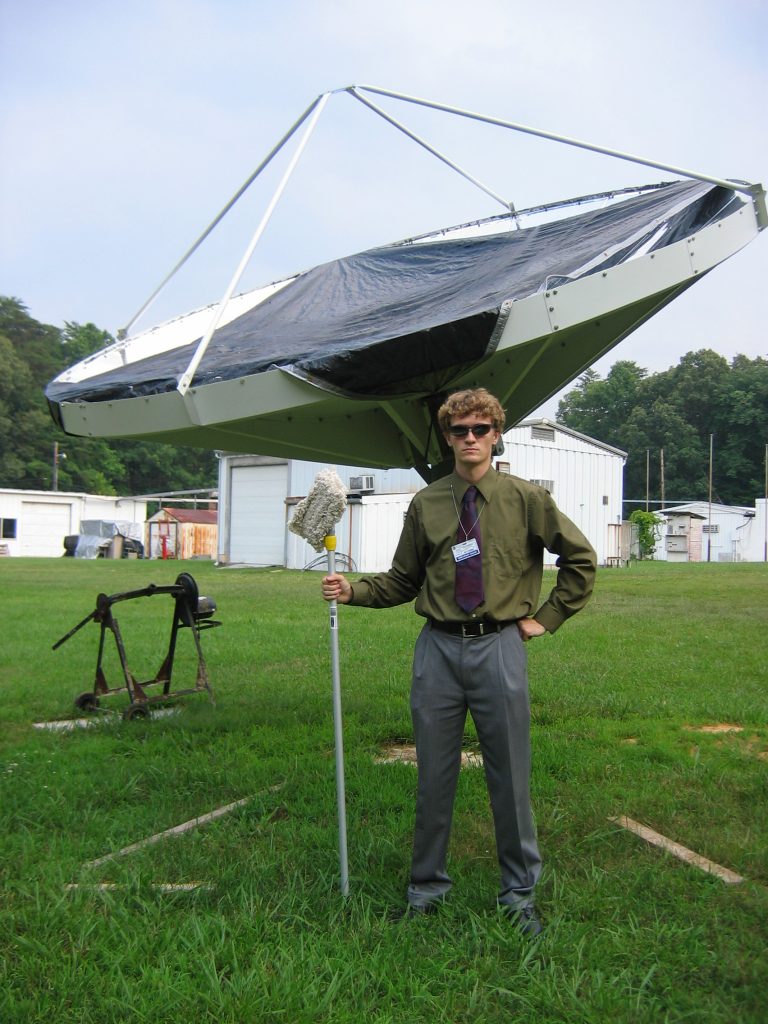2003-2004: High Resolution Spectroscopy of a Flare on Barnard’s Star
I worked on this project with Diane Paulson for UROP (Undergraduate Research Opportunity Program) my sophomore year as an undergraduate at the University of Michigan. I came in not knowing anything about programming or working with linux/unix, and came out knowing IDL, some IRAF, and with some interesting results. We identified many emission lines in the flare, some of which were unexpected, including silicon and aluminum. This was a great project that introduced me to research and Diane pointed me in the right direction for my next research experience at the Harverd/Smithsonian Center for Astrophysics.
Paulson, D. B., Allred, J. C., Anderson, R. B., Hawley, S. L., Cochran, W. D., & Yelda, S. (2006). Optical spectroscopy of a flare on Barnard’s star. Publications of the Astronomical Society of the Pacific, 118(840), 227. https://doi.org/10.1086/499497
Summer 2004: Internship at the Harvard/ Smithsonian Center for Astrophysics
I spent ten weeks in the summer of 2004 in Cambridge, MA working with Tom Megeath to test a new method of measuring the density of molecular clouds in data from the Spitzer space telescope. Molecular clouds are nebulae of gas and dust where star and planet formation occurs. In many nebulae, there are dark filaments of gas in front of a glowing background. We tried to measure how much of that background radiation was absorbed as it passed through the dust filaments, and by doing so, find out the structure of the dark clouds. The final version of the Spitzer Orion nebula image I was working with was a press release in 2006. Here is the image:

Anderson, R.B., Megeath, S.T., Myers, P.C. (2005) Mapping Molecular Clouds Using Spitzer’s InfraRed Array Camera, AAS 205th Meeting https://aasarchives.blob.core.windows.net/archives/BAAS/v36n5/aas205/120.htm
Summer 2005: Internship at the Lunar and Planetary Institute
I worked over the summer of 2005 with Dr. Walter Kiefer studying quasi-circular depressions (QCDs) on Mars. QCDs are large depressions that appear in topographic data, but are not visible to the eye. It is likely that they are the remains of very ancient impacts that have been all but covered up by more recent events. I made measurements of the QCD diameter and depth and compared my data with the expected depth for newly formed craters. The difference told us how much the QCDs have been filled in. By studying multiple QCDs in a region, we hoped to learn something about the depositional history of that region. In addition, the data that I gathered has been used in modeling gravity anomalies associated with large basins on mars. In general, gravity is slightly stronger over large basins, implying an increase in density. By knowing the fill thickness, the contribution from the fill can be subtracted from the gravity anomaly. Whatever is left must be due to an uplift of denser mantle material.
Anderson, R.B., Kiefer, W.S., Frey, H.V., Roark, J.H. (2006) Morphometry of Large Martian Impact Structures and Implications for Resurfacing Processes on Mars. Lunar and Planetary Science XXXVII https://www.lpi.usra.edu/meetings/lpsc2006/pdf/2018.pdf


Mars Analytical Chemistry Experiment (MACE)
In 2005 and 2006 I worked with Professor Hunter Waite on the Mars Analytical Chemistry Experiment (MACE), a 2 Dimensional Gas Chromatography/Mass Spectroscopy (2DGCMS) instrument that was proposed for Mars Science Laboratory. I researched pattern recognition methods for analyzing the data, and developed a simple computer model of one part of the instrument that we could use to simulate results and then apply pattern recognition techniques to the data. My work on this project was the topic of my senior thesis at the University of Michigan.
Summer 2006: NASA Academy Summer Internship

During the summer of 2006 I worked at NASA’s Goddard Space Flight Center with Eric Cardiff on extracting oxygen from the lunar regolith by melting it with concentrated sunlight. The prototype device used a large Fresnel lens to focus light on a sample of lunar regolith inside a vacuum chamber and evolve oxygen. My work involved preparing a larger system for operation. The new system used a 12′ diameter reflective parabolic dish to focus sunlight. Unfortunately, due to design flaws in the vacuum chamber, it had to be redesigned to withstand the extremely high temperatures attained by focusing such a large amount of energy. I worked on doing a thermal analysis of the design to determine what was necessary to allow it to survive. Although we were unable to get a working chamber built by the end of the summer, I learned about vacuum systems and got the chance to work with my hands, which was a nice change.
In addition to individual research, the NASA Academy program involved a self-directed group project. We chose to design a mission to Saturn’s moon Enceladus, which has been a target of great astrobiological interest since the discovery of water geysers at its south pole. I was part of the mission architecture team, designing a trajectory that was efficient but also satisfied all the science goals of the mission. The project was a great experience, and gained attention from experts in the field. Our mission concept – Enceladus Astrobiology and Geophysics Lander Expedition (EAGLE) – was one of the first of its kind, and we were invited to present our work at the Enceladus Focus Group meeting prior to the 2006 AAS Division for Planetary Sciences (DPS) conference, and to the Outer Planets Assessment Group (OPAG) – a group of scientists who advise NASA on future exploration of the outer solar system.
Here is a link to our OPAG presentation.
